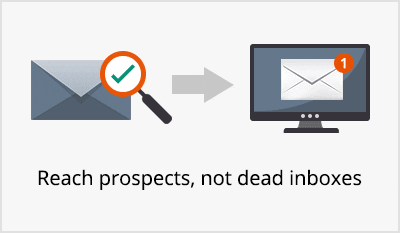BIMI is a new email authentication standard that improves security while increasing brand visibility and engagement. Many emails flood your inbox, but not all of them deserve the same trust. This is where BIMI, or Brand Indicators for Message Identification, comes in.
With BIMI, legitimate senders get an extra layer of trust and a noticeable boost in brand visibility – something every marketer dreams of. An email with BIMI shows the sender’s logo next to their name. The logo helps tell an authentic email from a forged attempt. This prevents subscribers from falling into phishing traps.
What is BIMI?
BIMI is an email standard that allows inbox providers to show your verified logo right next to your name in the recipient’s inbox. It’s like having a digital handshake that says, “Hey, you can trust me!”.
When an email passes BIMI authentication, it is associated with your official logo. As a result, the recipient sees a visual indicator (your logo) next to the email sender’s name. This provides immediate reassurance that the email is legitimate and protects your brand from domain impersonation.
BIMI is available with inbox providers that support it. The BIMI group currently lists the below as the participating inbox providers.
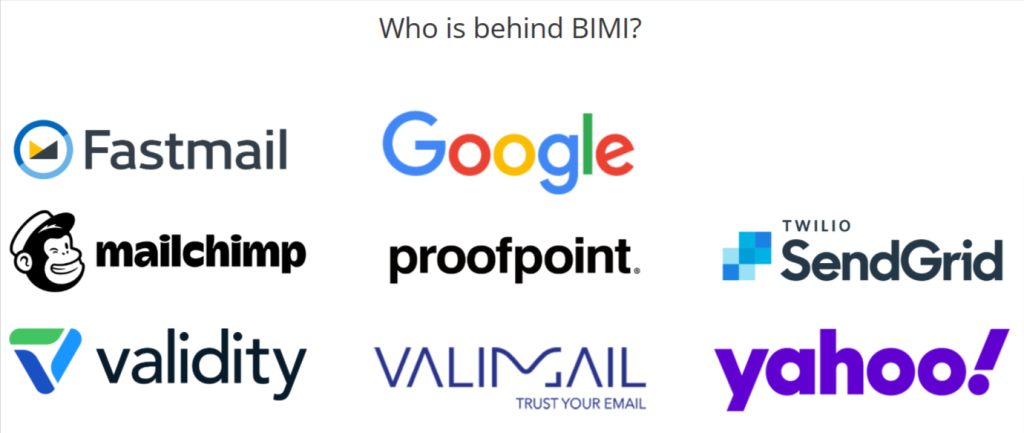
Some services haven’t yet adopted BIMI.

How BIMI works
BIMI works with existing email authentication protocols such as SPF, DKIM, and DMARC. These protocols strengthen fraud prevention measures and boost your email sender reputation.
As you probably know, each of these protocols have unique purposes.
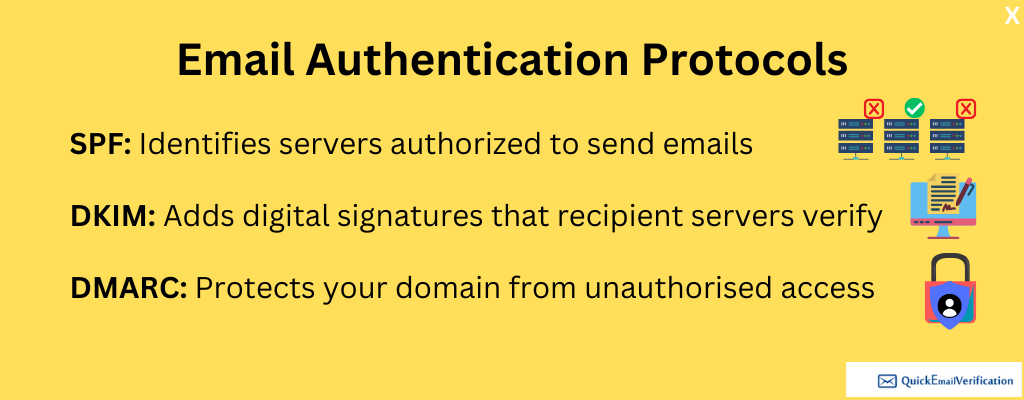
BIMI goes a step further by adding a visual logo to authenticated emails. This is done through a DNS (Domain Name System) TXT record. That’s where the URL of your logo is stored. All email service providers (ESPs) can access it for display.
In order to display your logo, your domain must pass the DMARC policy with either a “quarantine” or “reject” policy in place. Once set up, email service providers like Gmail and Yahoo can retrieve the logo and show it next to your emails. This results in increased trust and better engagement from recipients.
Why we need BIMI
Here’s some data you can’t ignore. Some estimates suggest that phishing is responsible for 80% of reported security incidents. That explains why the email ecosystem (or even the sender) goes to great lengths for authentication.
Here are two major reasons:
1. Spam and email bounce
Some businesses – even genuine ones – send out a huge number of unsolicited emails. But this approach has two severe limitations:
Many recipients mark these emails Spam. And when they do, it puts your sender reputation at stake. Because the inbox provider notices that some people thought the email was spam. Hence, the inbox begins treating the future emails from the sender as spammy emails.
Many addresses are invalid so those emails would bounce. A high bounce rate is a strong indicator of a spammer. The email ecosystem treats email bounces very seriously.
So if your emails bounce or they are spammy, different service providers will ‘blocklisted’.
As you can see, a little carelessness on your part can backfire and even lead to ESPs or ISPs blocking you. Of course, there are ways on how to remove your IP from blocklist. However, it is better to keep your email list clean and avoid sending unsolicited email.
2. Impersonation with malafide intentions
Emails that impersonate trusted organizations, such as banks or government offices, pose a major risk. BIMI fights back against domain spoofing and phishing by giving recipients a trusted visual cue – your logo.
They can easily defraud recipients, spread misinformation, or lead people to share sensitive, confidential information.
Strong email authentication measures can either reject such emails or divert them to the spam folder. Such actions hugely reduce the risks of malafide emails. Email standards like BIMI further strengthen activities to prevent frauds.

What BIMI emails look like
Check out the below image. On your left, you see an inbox with messages from senders who have adopted BIMI. You will see that alongside the name, the email service provider will display the logo of the sender.
You’ll agree that the presence of a logo lends credibility to the message and signals the sender’s legitimacy. It suggests that your email service provider has screened or vetted the sender. Subsequently, it will improve your email marketing performance.
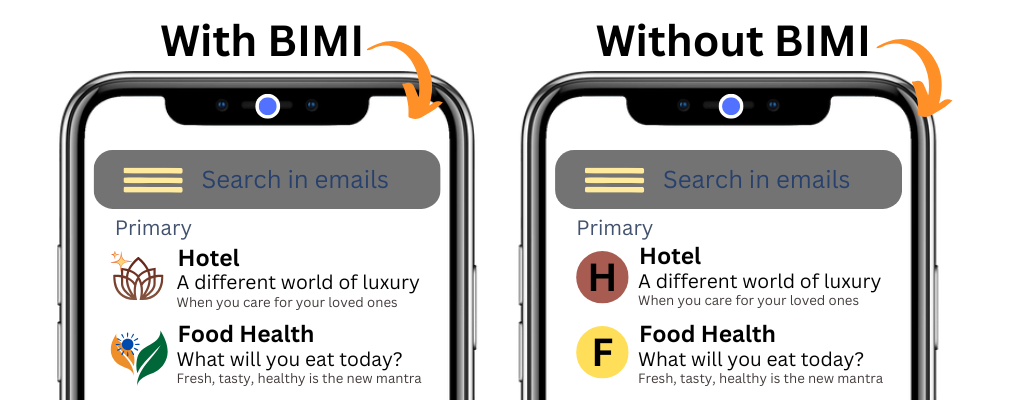
Compare it to what you see on your right. The sender name, subject line or headers are the same, but there’s no way to tell if the sender is genuine. There’s no image indicator that tells you if the sender is genuine.
Because of the absence of the trust signals in the email on your right, fewer subscribers will engage with this email. That can impact email deliverability in future.
How to check for BIMI
Just because an email has a logo alongside it doesn’t mean the email is BIMI authenticated. First, check the below screenshot:
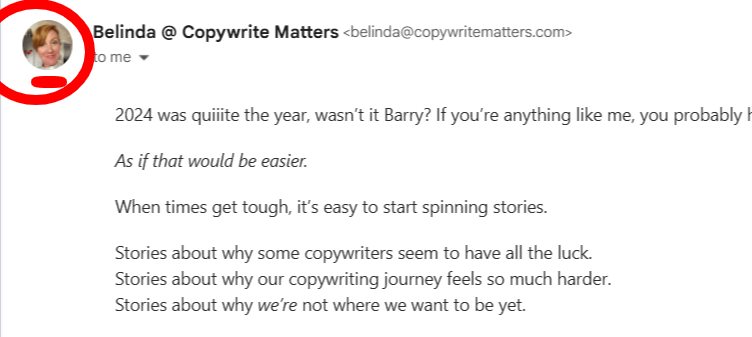
There’s a photo alongside the email, so you might think the email is BIMI authenticated.
However, that’s not the case, as we shall soon find out.
You probably know that Google allows you to add your profile pic. And this profile pic is displayed exactly the way BIMI displays logo. Which obviously can create confusion.
Hence, we’ll need to verify this. Let’s head to the BIMI Generator page in the Bimigroup site. Just enter the domain of the sender ( in the above case, copywritematters[dot]com).
The site will tell you if the domain was BIMI authenticated. As you can see, CopyWriteMatters hasn’t yet opted for BIMI – at least not till we received this email.
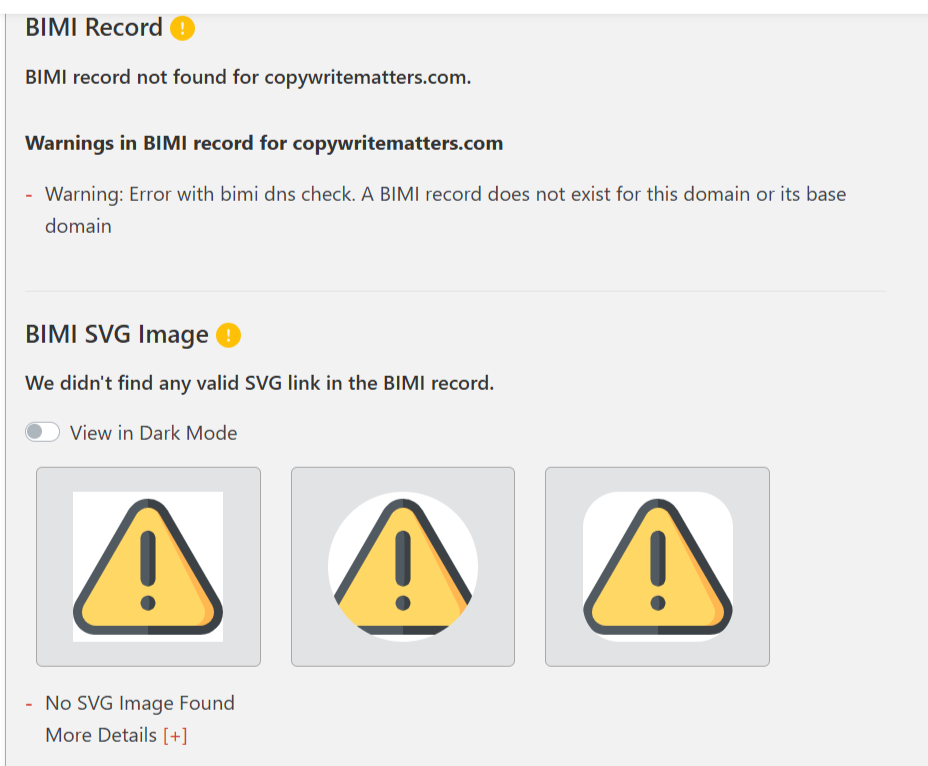
In addition to the BIMI group, you can also check for the BIMI records from other tools like Agari-Fortra, MX ToolBox, and Valimail. Each of them requires slightly different information and will show you results a little differently.

Why BIMI is important
Implementing BIMI can improve your email marketing in several ways:
1. Boosts trust and credibility
A verified logo boosts trust by enhancing your sender reputation and visual brand identity. You can expect to see higher open and click-through rates in your marketing email campaigns.
In an age of growing phishing threats, consumers are cautious. Displaying your logo assures them your email is from a trusted source, leading to higher open and click-through rates.
2. Protects against phishing
BIMI shows your verified logo and thus protects your brand from bad actors trying to use your brand. BIMI makes it easier for recipients to spot fraudulent emails, enhancing overall email security.
3. Increases brand recognition
Your logo in the inbox helps your emails stand out even in crowded inboxes. That’s because the visual brand identity adds muscle to the email and improves email engagement rates.
4. Improves deliverability
BIMI can improve your email delivery. Some providers, like Gmail, prioritize emails with BIMI verification, which increases the chance your email lands in the inbox instead of spam. That way, BIMI could become your key to improve sender reputation.
Also, because recipients trust authenticated emails more, they’re more likely to interact with your messages, improving deliverability.
5. Gives a competitive edge
BIMI adoption is still low, with only 0.14% of top domains using it as of 2023. Paradoxically, that might actually be a good thing. You have a great opportunity to be among the early adopters and project the image of a company that cares about its users.
By adopting BIMI early, you can stand out as a security-conscious, forward-thinking brand.
Who should use BIMI
BIMI is useful for businesses of all sizes. While large organizations with multiple domains and subsidiaries benefit greatly, even small businesses and startups can use BIMI to build brand trust early.
If your business sends a lot of marketing or transactional emails, BIMI can be key to improving your email performance.
Requirements for BIMI Setup
To use BIMI, you need to meet these basic requirements:
- DMARC Policy: Your domain needs a valid DMARC record with a “quarantine” or “reject” policy.
- SPF and DKIM Authentication: These standards ensure your emails are legitimate.
- Logo Format: Your logo must be in SVG (Scalable Vector Graphic) format, square-shaped, and have no text.
- Optional: Verified Mark Certificate (VMC): Some providers require a VMC to show your logo, though it’s not always needed.
How to set up BIMI
Once you meet the requirements, follow these steps to set up BIMI:
1. Check DMARC Settings: Ensure your DMARC policy is set to “quarantine” or “reject.”
2. Create an SVG Logo: Convert your logo to SVG format following BIMI’s rules.
Add a DNS Record: Create a DNS TXT record that points to your logo’s location.
3. Test Your Setup: Use tools like BIMI Inspector to check if everything works.
Conclusion: BIMI is becoming essential
As email security becomes more important, BIMI is expected to become a standard practice. Major email providers like Gmail and Yahoo already support BIMI. Once more businesses adopt it, BIMI will likely become essential for email marketers.
In a sense, BIMI is no longer optional. For businesses that care about their email security and protecting their clients from frauds, it’s seeing rapid adoption. Implementing BIMI helps you build trust with recipients, raises engagement levels, and sets you apart from the competition.
Ready to boost your email marketing with BIMI? Start setting it up today to stay ahead of the curve!

